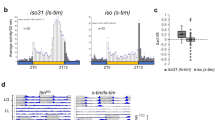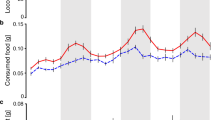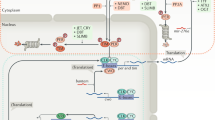Abstract
THE parasitic wasp, Nasonia vitripennis, is a long day insect which produces developing larvae in the summer months and diapausing larvae when the day-length falls below the critical value of 15.25 h light in 24 h (ref. 1). There is now strong circumstantial evidence that the “time measuring” ability, and thus the photoperiodic “clock”, of this species is based on a circadian rhythm of sensitivity to light which is itself phase set by the cycle of light and dark2. In particular, night interruption experiments produce two peaks of diapause inhibition and support the coincidence model proposed by Pittendrigh and Minis3,4, and daily chilling during the light or dark of cycles close to the critical day-length can reverse their photoperiodic effect5. This communication describes experiments in which females of N. vitripennis were subjected to night interruption experiments (in which the dark component of the cycle is systematically scanned by supplementary light pulses) together with a daily period of chilling in an attempt to explain these photoperiodic reversals.
This is a preview of subscription content, access via your institution
Access options
Subscribe to this journal
Receive 51 print issues and online access
$199.00 per year
only $3.90 per issue
Buy this article
- Purchase on Springer Link
- Instant access to full article PDF
Prices may be subject to local taxes which are calculated during checkout
Similar content being viewed by others
References
Saunders, D. S., J. Insect Physiol., 12, 569 (1966).
Saunders, D. S., J. Insect Physiol., 14, 433 (1968).
Pittendrigh, C. S., and Minis, D. H., Amer. Nat., 98, 261 (1964).
Pittendrigh, C. S., Z. Pflanzenphysiol., 54, 275 (1966).
Saunders, D. S., Science, 156, 1126 (1967).
Lees, A. D., Nature, 210, 986 (1966).
Author information
Authors and Affiliations
Rights and permissions
About this article
Cite this article
SAUNDERS, D., SUTTON, D. Circadian Rhythms in the Insect Photoperiodic Clock. Nature 221, 559–561 (1969). https://doi.org/10.1038/221559a0
Received:
Revised:
Issue Date:
DOI: https://doi.org/10.1038/221559a0
This article is cited by
-
Photoperiodic determination of insect development and diapause
Journal of Comparative Physiology (1974)
-
The photoperiodic control of reproduction inCoturnix quail. The temporal pattern of LH Secretion
Journal of Comparative Physiology ? A (1974)
Comments
By submitting a comment you agree to abide by our Terms and Community Guidelines. If you find something abusive or that does not comply with our terms or guidelines please flag it as inappropriate.



